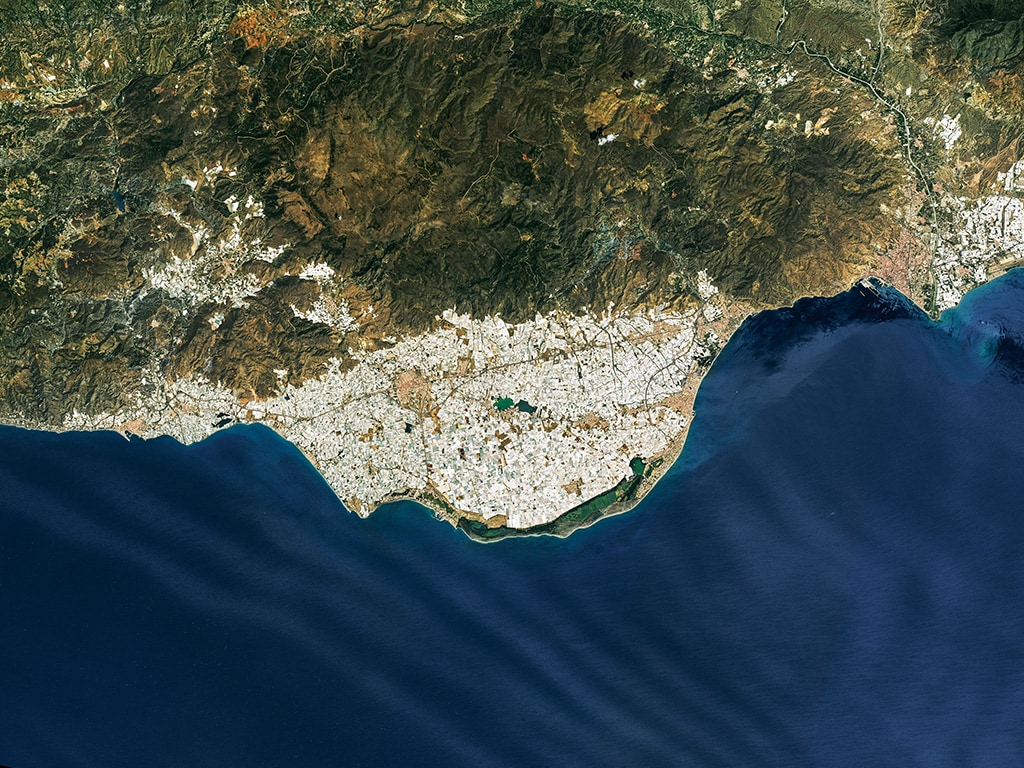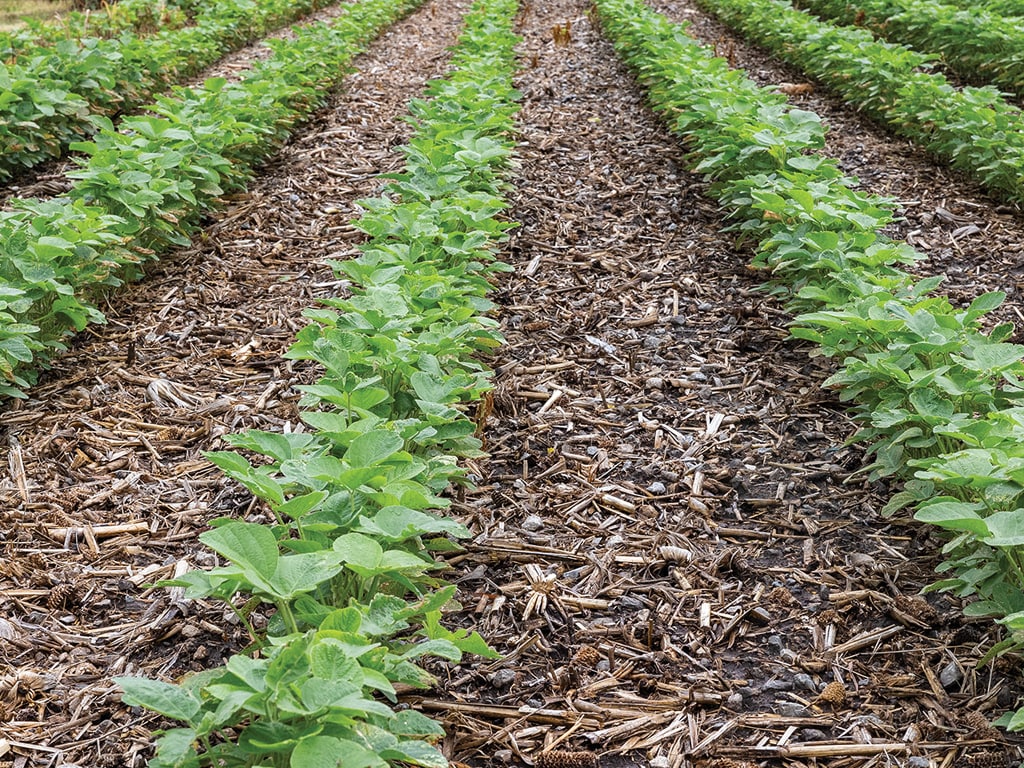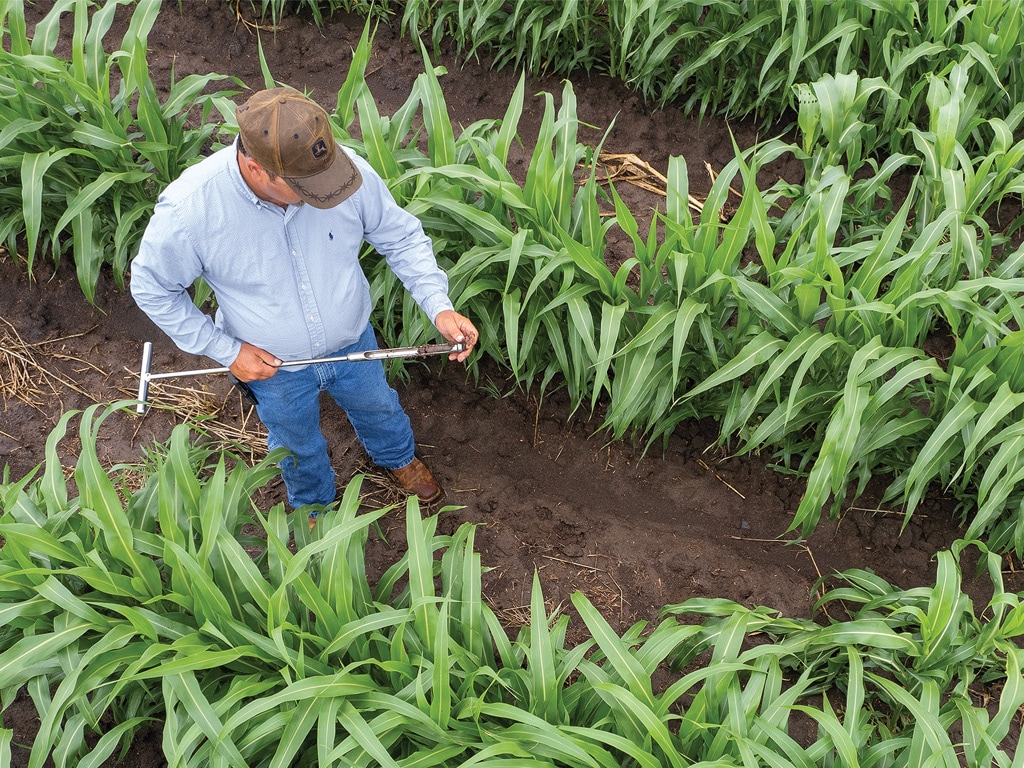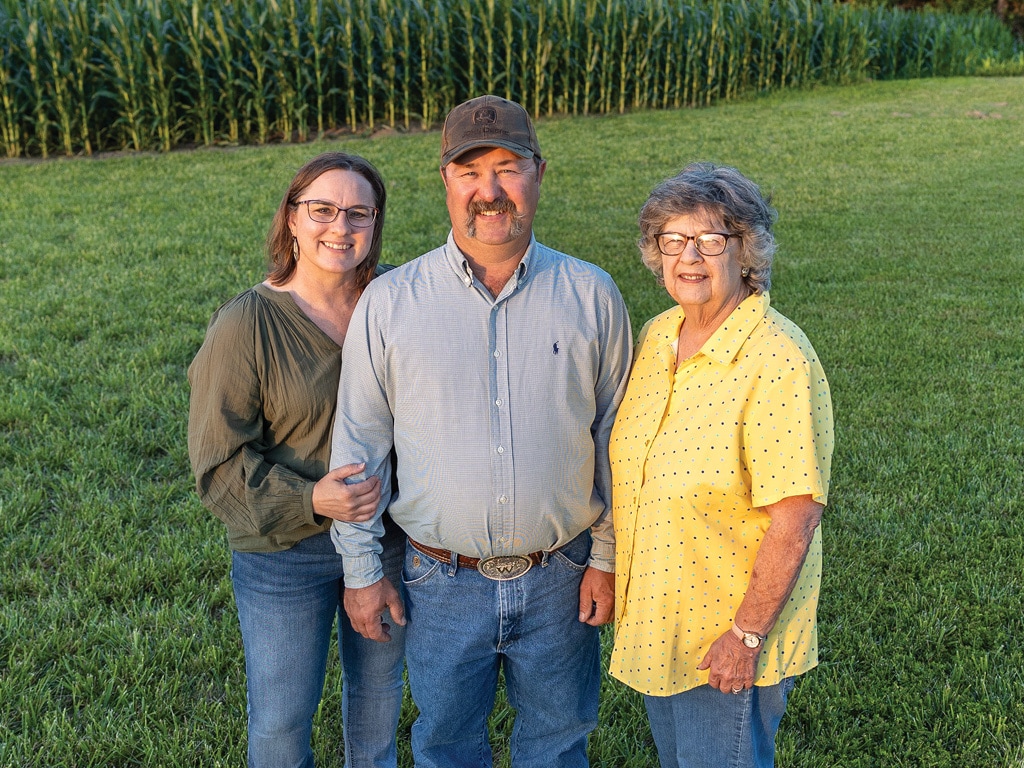Agriculture, Sustainability November 01, 2024
Farmers Fueling the Future Part 2: Conservation Legacy
Innovation legacy powers Kansas farm.
by Bill Spiegel
A steadfast commitment to improving the soil is a hallmark of Andy and LaVell Winsor's 3,000 acre farm near Grantville, Kansas.
The Winsors farm corn and soybeans in the Kansas River Valley, and are determined to optimize the acres they farm by adding irrigation systems to dryland farms or improving irrigation systems already in place, to maximize production on fields suited for supplemental moisture.
"Additional farmland is hard to secure, and this move was to make our current farms more efficient and increase production and profitability with the difficulty of adding additional acres," LaVell explains.
Primarily, these improvements include adding or upgrading center pivot systems. However, they installed subsurface drip irrigation (SDI) on one farm that has unique challenges due to highway and railroad right-of-ways, and a creek that further divides the farm. While SDI costs more than center pivot systems, the Winsors were able to customize the layout to fit odd-shaped fields a center pivot system could not completely cover.
"The benefit is that we reduce the water usage because it's emitting water right at the root zone. We're saving about 20% on water usage that way, plus the energy used to pump the water," Andy explains.
Additionally, nutrients can be spoon-fed to the crop with the drip irrigation, he adds.
"Nutrients are applied right at the time the plants need it, and at the root zone where the crop takes them up right away. We're using a lot fewer nutrients to grow more bushels."
When SDI proved successful, they expanded the system to include a second field on that farm. Now, they plan to add it to more farms when possible; one on a rented farm that is flood irrigated and another on acres currently in a dryland system.
They also aim to add tile drainage to a couple of farms with heavy soils, to increase oxygen flow and improve soil health, Andy says.
Above. For Andy and LaVell Winsor, adding subsurface drip irrigation helps fine-tune water application. Soybeans are planted into cover crop residue. Andy Winsor pulls annual soil tests on 1.6-acre grids, using variable rate fertilizer technology to feed the crops. LaVell and Andy Winsor continue the conservation legacy that began with Andy's mother Pat and late father Russell, six decades ago. Strict soil testing, plant analysis and conservation are routine on their Kansas farm.
Family tradition. Andy continues the conservation work that began with his father Russell and grandfather James in the 1960s. They were early advocates of conservation farming, installing terraces and waterways more than six decades ago. In 2016, the Winsor family earned the National Conservation Legacy Award, presented by the American Soybean Association.
Russell had crop and livestock enterprises. After he passed away in 2021, Andy took over the crop operation while his brother Ben runs the livestock program. The boys' mother Pat still lives on the farm where she and Russell raised their family.
Andy joined the farm after he graduated from college in 1994. Farming with his dad, they began poring over soil tests and immediately embraced guidance systems and variable rate fertilizer technologies as they became available. In 2012 they began adopting cover crops.
"We were interested in building soil health and trying something new, Andy says. They saw benefits in soil aggregate stability and reduced erosion right away. Now, they aim to plant cover crops each fall after corn harvest.
Andy applies 40 to 60 pounds of rye cover crop seed along with dry fertilizer in the fall.
"As that fertilizer breaks down and becomes available to the plant, the rye is right there to take it up, he explains. Soybeans are planted directly into growing rye and terminated soon after.
He says corn yields don't suffer from cover crops, and the soil is protected by the extra residue.
Always quick to try something new, in 2024 they planted grain sorghum on upland soils, into cover crop residue. It's the first grain sorghum they planted in more than two decades.
"We wanted to add diversity to our crop rotation. Grain sorghum has a fibrous root system, which improves soil health, Andy explains. "And it pollinates at a different time than corn, so we're spreading out our risk.
The fibrous root system scavenges nutrients, and we can apply less fertilizer while improving organic matter and increasing soil health, LaVell adds.
Making a difference. The Winsors haul soybeans to crush plants in Emporia, Kansas, and Kansas City, Missouri, where soybean oil will be used in biodiesel. Much of the farm's corn is destined for an ethanol plant in Garnett, Kansas. Andy is an advocate for renewable fuel adoption, and serves on the American Soybean Association Board of Directors.
Biodiesel demand increases the value of soybean oil by about 13%, he says. "It's very important that we take that message to Washington D.C., he explains. "We have to tell that story and be a voice for agriculture. ‡
Read More

AGRICULTURE, SUSTAINABILITY
A Miracle in Plastic
Spanish greenhouse cluster is a hotbed of innovation and sustainability.

AGRICULTURE, EDUCATION
Camelina Connection
This tiny oilseed crop can be a boon to renewable fuels.





